Abstract
1 The disappearance of morphine from specially formulated pellets containing 75 mg morphine base was measured for 10 days after they were implanted into adult rats; the morphine content decreased at a rate of 5 mg pellet daily.
2 From the 2nd to the 6th day of implantation the plasma morphine concentration increased but by the 10th day had declined to only one half the concentration found on day 6.
3 Six and 24 h after the pellets were removed from 6 day implanted animals the plasma concentration of morphine amounted to only one quarter to one sixth of the amount in the plasma, respectively, of animals with pellets intact.
4 The pulmonary minute volume of naive and implanted rats was depressed by morphine in proportion to the plasma morphine concentration. Less depression was produced by intravenous morphine in the implanted rats than in the naive animals; the greater morphine tolerance displayed by the implanted animals could be shown by the third day of implantation and appeared to be maintained to the 10th day.
5 The pulmonary minute volume of implanted rats on the 6th day was much less than the pulmonary minute volume of naive rats. Six and 24 h after the pellets were removed the pulmonary minute volume increased as the plasma morphine concentration decreased.
6 The effects on the pulmonary minute volume produced by the slow release of morphine from the implanted pellets was not changed by the development of tolerance while the effects of morphine produced by rapid injection were diminished by the development of tolerance; the different effects of morphine are accordingly linked to the mode of administration.
7 We conclude that the action of morphine on the pulmonary minute volume in tolerant rats following rapid injection is fundamentally different from its action following its slow release from implanted pellets, possibly due to differences in access to an undefined neuronal site.
Full text
PDF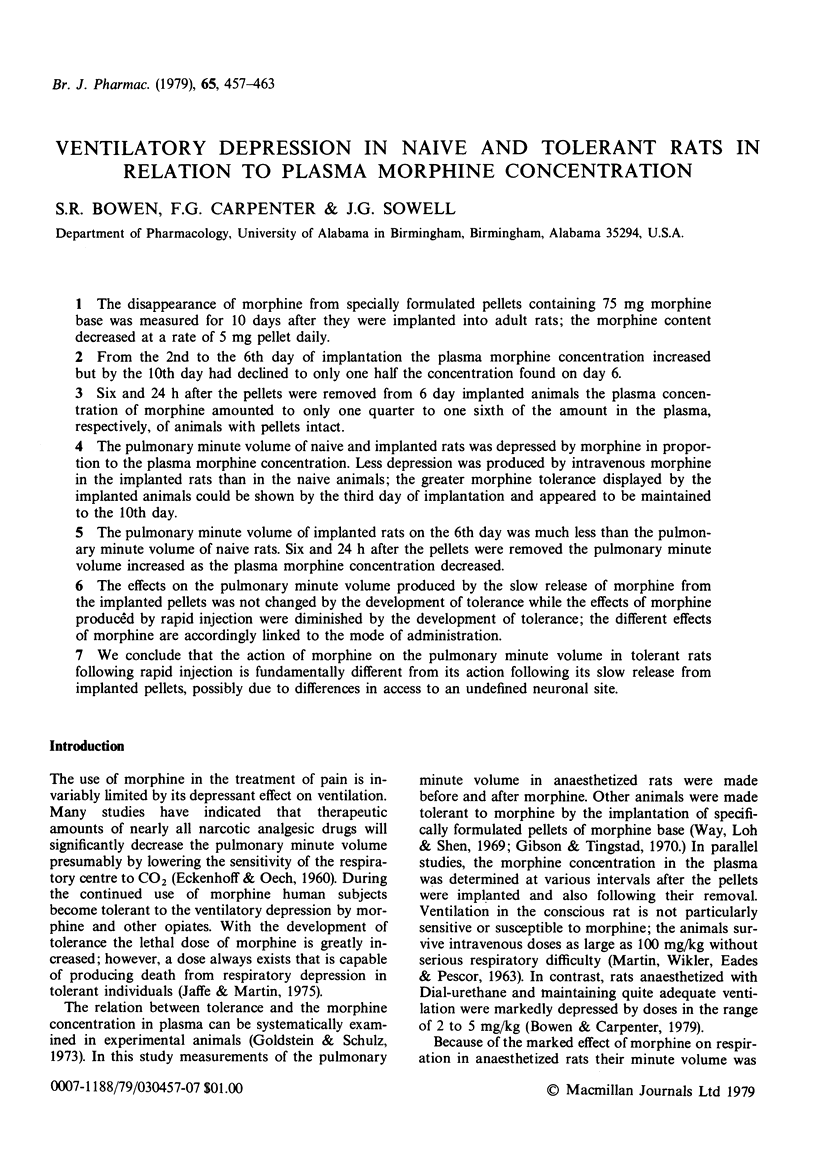
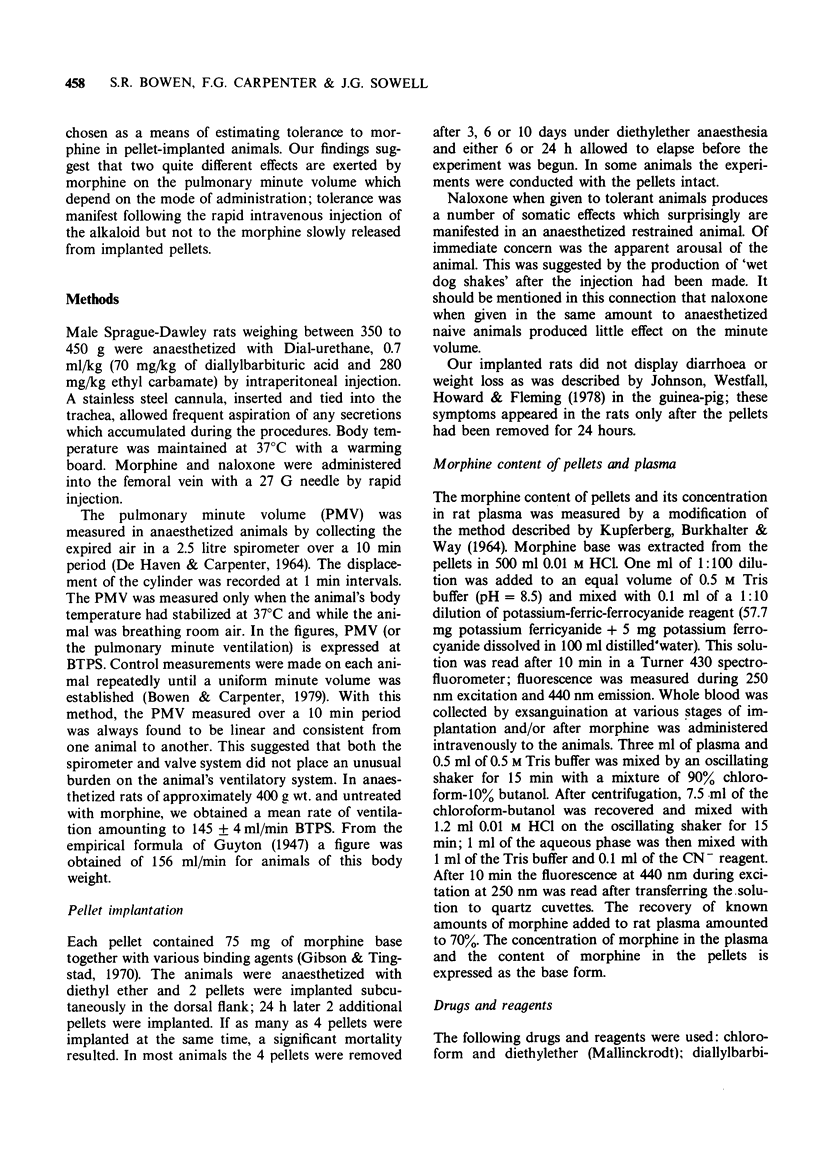
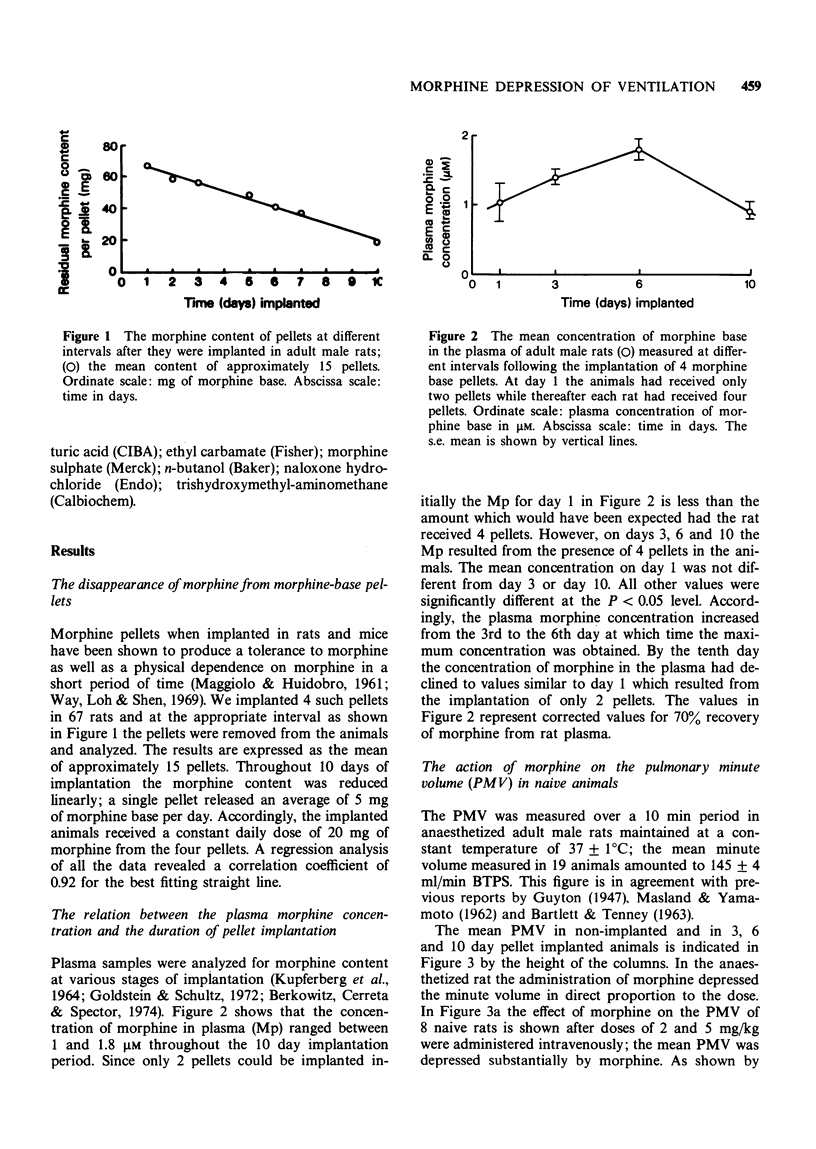
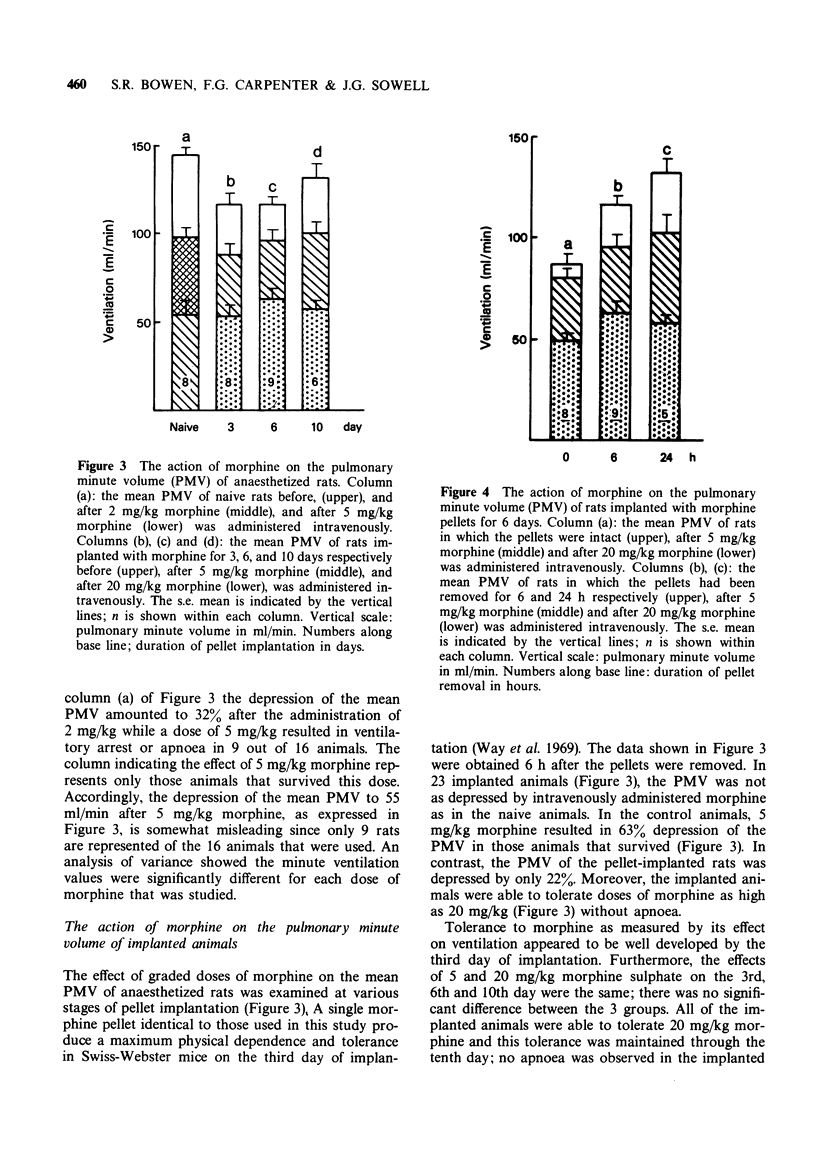
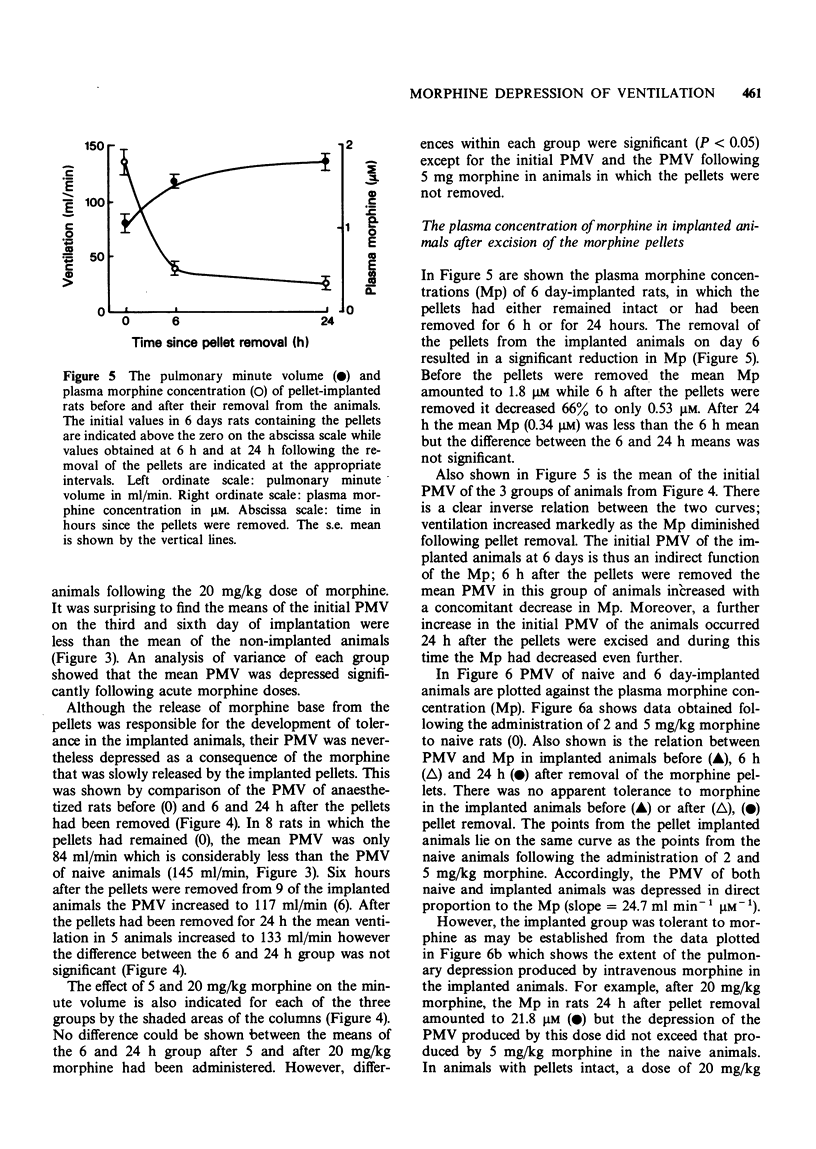
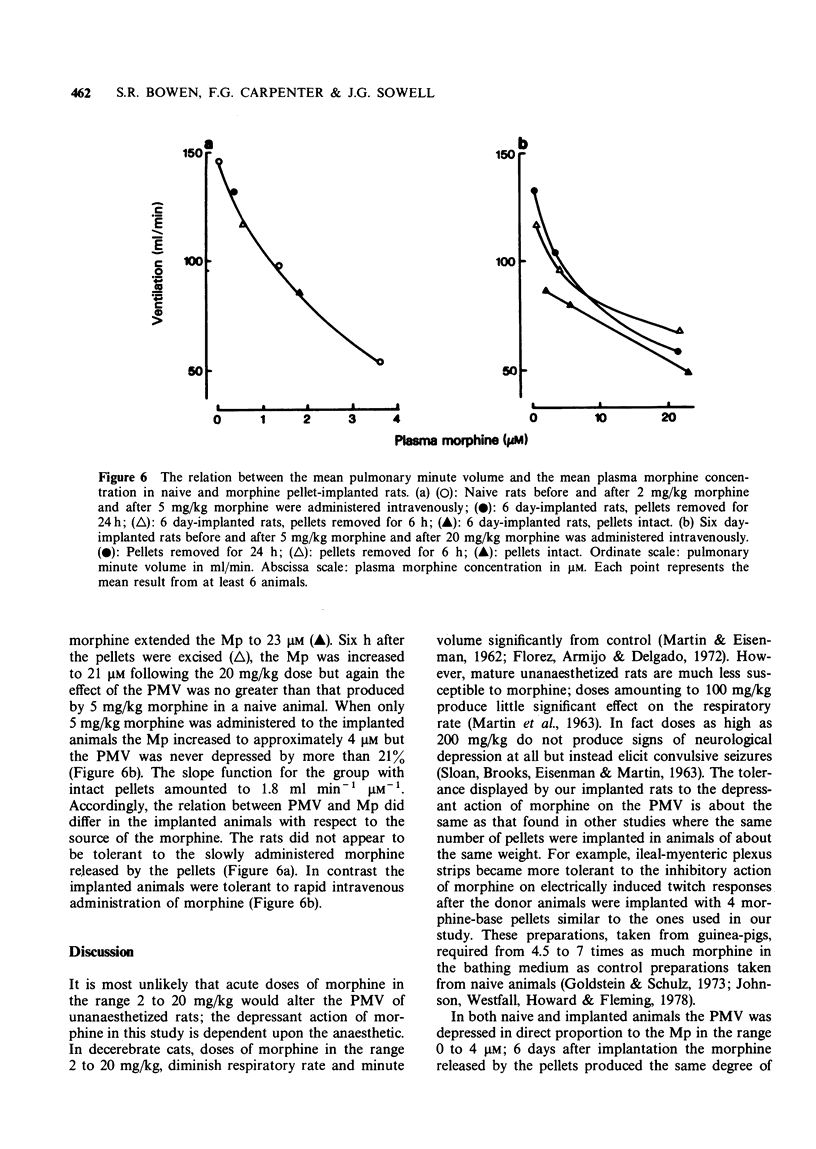
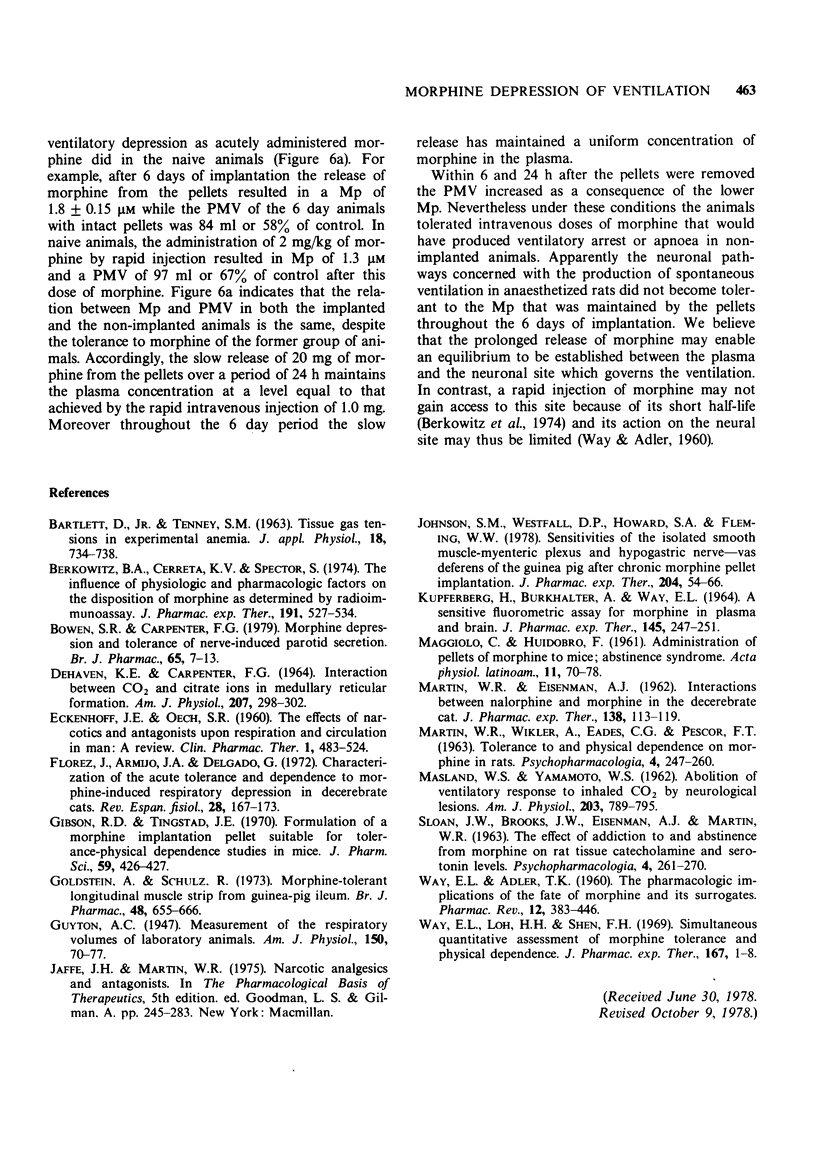
Selected References
These references are in PubMed. This may not be the complete list of references from this article.
- BARTLETT D., Jr, TENNEY S. M. Tissue gas tensions in experimental anemia. J Appl Physiol. 1963 Jul;18:734–738. doi: 10.1152/jappl.1963.18.4.734. [DOI] [PubMed] [Google Scholar]
- Berkowitz B. A., Cerreta K. V., Spector S. The influence of physiologic and pharmacologic factors on the disposition of morphine as determined by radioimmunoassay. J Pharmacol Exp Ther. 1974 Dec;191(3):527–534. [PubMed] [Google Scholar]
- Bowen S. R., Carpenter F. G. Morphine depression and tolerance of nerve-induced parotid secretion. Br J Pharmacol. 1979 Jan;65(1):7–13. doi: 10.1111/j.1476-5381.1979.tb17327.x. [DOI] [PMC free article] [PubMed] [Google Scholar]
- DEHAVEN K. E., CARPENTER F. G. INTERACTION BETWEEN CO2 AND CITRATE IONS IN MEDULLARY RETICULAR FORMATION. Am J Physiol. 1964 Aug;207:298–302. doi: 10.1152/ajplegacy.1964.207.2.298. [DOI] [PubMed] [Google Scholar]
- ECKENHOFF J. E., OECH S. R. The effects of narcotics and antagonists upon respiration and circulation in man. A review. Clin Pharmacol Ther. 1960 Jul-Aug;1:483–524. [PubMed] [Google Scholar]
- Flórez J., Armijo J. A., Delgado G. Characterization of the acute tolerance and dependence to morphine-induced respiratory depression in decerebrate cats. Rev Esp Fisiol. 1972 Sep;28(3):167–173. [PubMed] [Google Scholar]
- Gibson R. D., Tingstad J. E. Formulation of a morphine implantation pellet suitable for tolerance-physical dependence studies in mice. J Pharm Sci. 1970 Mar;59(3):426–427. doi: 10.1002/jps.2600590338. [DOI] [PubMed] [Google Scholar]
- Goldstein A., Schulz R. Morphine-tolerant longitudinal muscle strip from guinea-pig ileum. Br J Pharmacol. 1973 Aug;48(4):655–666. doi: 10.1111/j.1476-5381.1973.tb08254.x. [DOI] [PMC free article] [PubMed] [Google Scholar]
- Johnson S. M., Westfall D. P., Howard S. A., Fleming W. W. Sensitivities of the isolated ileal longitudinal smooth muscle-myenteric plexus and hypogastric nerve-vas deferens of the guinea pig after chronic morphine pellet implantation. J Pharmacol Exp Ther. 1978 Jan;204(1):54–66. [PubMed] [Google Scholar]
- KUPFERBERG H., BURKHALTER A., WAY E. L. A SENSITIVE FLUOROMETRIC ASSAY FOR MORPHINE IN PLASMA AND BRAIN. J Pharmacol Exp Ther. 1964 Aug;145:247–251. [PubMed] [Google Scholar]
- MAGGIOLO C., HUIDOBRO F. Administration of pellets of morphine to mice; abstinence syndrome. Acta Physiol Lat Am. 1961;11:70–78. [PubMed] [Google Scholar]
- MARTIN W. R., WIKLER A., EADES C. G., PESCOR F. T. TOLERANCE TO AND PHYSICAL DEPENDENCE ON MORPHINE IN RATS. Psychopharmacologia. 1963 May 21;4:247–260. doi: 10.1007/BF00408180. [DOI] [PubMed] [Google Scholar]
- MASLAND W. S., YAMAMOTO W. S. Abolition of ventilatory response to inhaled CO2 by neurological lesions. Am J Physiol. 1962 Nov;203:789–795. doi: 10.1152/ajplegacy.1962.203.5.789. [DOI] [PubMed] [Google Scholar]
- SLOAN J. W., BROOKS J. W., EISENMAN A. J., MARTIN W. R. THE EFFECT OF ADDICTION TO AND ABSTINENCE FROM MORPHINE ON RAT TISSUE CATECHOLAMINE AND SEROTONIN LEVELS. Psychopharmacologia. 1963 May 21;4:261–270. doi: 10.1007/BF00408181. [DOI] [PubMed] [Google Scholar]
- WAY E. L., ADLER T. K. The pharmacologic implications of the fate of morphine and its surrogates. Pharmacol Rev. 1960 Dec;12:383–446. [PubMed] [Google Scholar]
- Way E. L., Loh H. H., Shen F. H. Simultaneous quantitative assessment of morphine tolerance and physical dependence. J Pharmacol Exp Ther. 1969 May;167(1):1–8. [PubMed] [Google Scholar]


